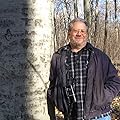Tap the gear icon above to manage new release emails.
Follow Joel Greenberg to get new release emails from Audible and Amazon.
I have been interested in animals as long as I can remember. And I was truly fortunate in having parents who supported me in this passion throughout. One cold Sunday morning when I was in fourth grade, I just finished reading an account of wolverines and I asked my dad if we could go to the Brookfield Zoo to see one. We lived in Skokie, so it was a schlep, but we drove to the zoo and watched the one individual on display. (We crossed paths with the zoo’s director, as he was almost the only other person present.) I became a birder in November 1967 when a senior in high school who was an avid member of the Evanston Northshore Bird Club took me out in the field. The highlight was two long-eared owls roosting amidst the interior branches of a conifer in a Northbrook front yard. Just before my senior year of high school my mother said if a super rare bird showed up within 1,000 miles we could go chase it. That happened three times with the destination coincidentally all to the same place: Brigantine National Wildlife Refuge in New Jersey (now Forsyth NWR), a nearly 1,700-mile round trip.
Each of the three undergraduate colleges I attended was selected largely on the basis of where I could see new birds: U. of Arizona, William and Mary, and Humboldt State University where I received my bachelor’s degree. Where I went to law and graduate school was selected using more standard criteria. I wanted to come back to the Midwest and pursue a career in environmental law and/or conservation. I received my JD and MA (environmental policy) from Washington University in St. Louis. I worked for a number of governmental agencies including the Cook County State's Attorney, Illinois Nature Preserves Commission, City of Chicago Department of Environment, and DuPage County Forest Preserve District. In addition, I conducted bird surveys and consulted on other conservation matters for a host of private and public organizations.
Except for the college years, I have spent my life in the Chicago area. My interests expanded to include herps, botany, and other facets of natural history, including the human role in the changes that had occurred over the centuries. This led to my 17-year project that resulted in A Natural History of the Chicago Region (2002). During this period, my friend Lynne Carpenter and I collaborated on A Birder's Guide to the Chicago Region (1999). In the course of my research, I encountered numerous writings that I thought should be available to a modern audience. Fortunately, the University of Chicago Press agreed, and the anthology Of Prairie, Woods, and Water was published in 2008.
Anyone who has delved into the historical natural history of the United States and Canada knows of the passenger pigeon, the most abundant bird in North America if not the world. As late as 1860, the population likely exceeded a billion birds. But they became a commodity, the cheapest terrestrial protein, for the two countries whose human populations were soaring. The species was slaughtered wherever it appeared. The last documented wild bird was shot in Indiana in1902 and the last of the species died in the Cincinnati Zoo on September 1, 1914. To mark the centenary of that event, and to turn it into a learning moment, a group of us created Project Passenger Pigeon. As part of this effort, I authored the first comprehensive history of the bird in decades, A Feathered River Across the Sky: The Passenger Pigeon’s Flight to Extinction. I also collaborated with filmmaker David Mrazek in making “From Billions to None: The Passenger Pigeon’s Flight to Extinction,” a film widely aired on PBS.
My latest book will be released in May 2026. It is titled To Life: Jews Exploring Nature and will be published by Rutgers University Press. This book is my most personal as it combines my love of natural history with my Jewish heritage. There is an introductory chapter discussing the various threads related to Jewish engagement with nature, but the heart of it is eight chapter-long biographies of Jews who studied a range of topics including birds, wetland ecology, botany, mammals, and herpetology. The eight manifest their Jewish identities in different ways from the secular to observant. The personal stories of these subjects will hopefully prove compelling of themselves but also provide portals into the various facets of the natural world which they studied.
One of the subjects is Libbie Hyman whose remarkable story inspired at least four women scholars to independantly launch extensvie research into her life and work. Judith Winston, one of these scholars, spent most of her career at the American Museum of Natural History and the Virginia Museum of Natural History. I am so pleased that she joined this project and authored the chapter on Hyman.
Read more
Read less



